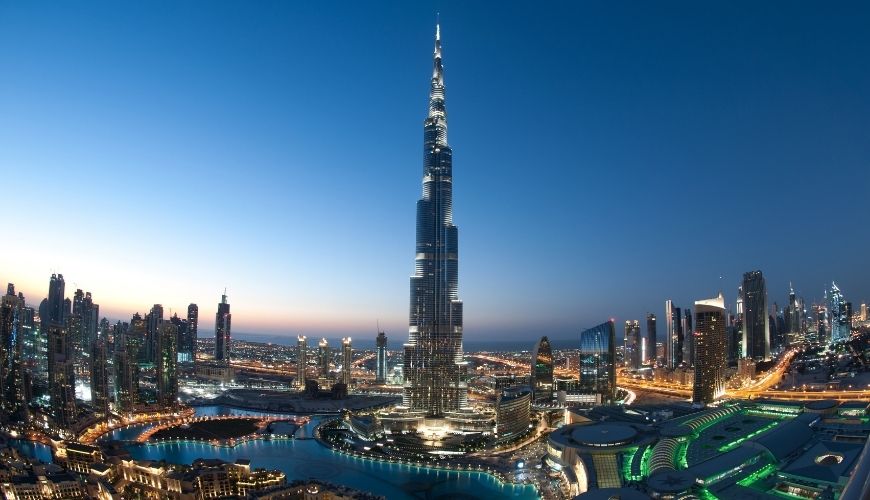Dubai’s extravagant architecture is a reflection of its ambition to stand out on the global stage. With limited natural resources, the city has leveraged tourism and real estate as economic drivers. Its eye-catching structures not only attract visitors but symbolise its determination to redefine itself as a modern, world-class destination. In fact, Dubai’s leaders use architecture to signal progress, innovation, and the limitless possibilities of their desert oasis. One such architectural marvel is the Burj Khalifa in Dubai. While everyone discusses its staggering height (828 metres) and stunning design, here are a few things about the Burj Khalifa, Dubai you didn’t know:
Vertical Transportation Engineering
One of the remarkable aspects of the Burj Khalifa is its elevator system, which is among the most advanced in the world. The elevators in the Burj Khalifa are some of the fastest, travelling at speeds of up to 36 kilometres per hour (22 miles per hour). This speed is essential to transport residents and visitors to such a great height efficiently. Interestingly, the elevators are also equipped with double-decker cabins, effectively doubling their capacity and reducing waiting times for passengers.
Wind Resistance
Dubai is no stranger to strong winds and sandstorms. To withstand these challenging weather conditions, the Burj Khalifa was designed with a unique ‘step-back’ architecture. This design, reminiscent of a spiral, serves a dual purpose. It helps to reduce wind pressure on the building and ensures that the wind flows smoothly around the structure, preventing it from swaying excessively. As a result, the Burj Khalifa can endure winds of up to 136 miles per hour without causing discomfort to its occupants.
Lighting Innovations
The Burj Khalifa isn’t just a breathtaking sight during the day; it’s also a dazzling spectacle at night. Its exterior is adorned with thousands of LED lights, which illuminate the building in various colours and patterns, creating a mesmerising light show. What’s intriguing is that the LED system is so energy-efficient that it consumes only about as much energy as 15 washing machines. The tower’s lighting is carefully choreographed, and it can be seen from miles away, contributing to Dubai’s reputation for nighttime opulence.
Vertical Garden and Sustainability
Beyond its extraordinary height and grandeur, the Burj Khalifa boasts a lush vertical garden. Spanning a length of 800 feet, it covers the base of the tower. This vertical garden not only enhances the aesthetics but also contributes to the building’s sustainability. It helps to reduce the temperature in the surrounding area, thus lessening the energy required to cool the building. The Burj Khalifa has been designed with sustainability in mind, making use of a solar hot water system, a greywater recycling system, and numerous other eco-friendly features.
Celestial Phenomenon
The Burj Khalifa isn’t just a man-made wonder; it has also played a part in a celestial phenomenon. It has been reported that the building can act as a natural lightning rod on some occasions. When lightning strikes, the electrical discharge is attracted to the Burj Khalifa, preventing it from hitting other nearby structures. This remarkable fact underscores the tower’s prominence and is a testament to the intricate science that went into its design.
The Burj Khalifa, Dubai, isn’t just a symbol of architectural grandeur; it’s a testament to human ingenuity and engineering marvels. From its state-of-the-art elevators and innovative lighting system to its sustainability efforts and unique response to extreme weather conditions, there is much more to this iconic skyscraper than meets the eye.
Are you excited to visit this colossal monument? Visit us if you are looking for affordable Dubai tour packages.



Comment (0)